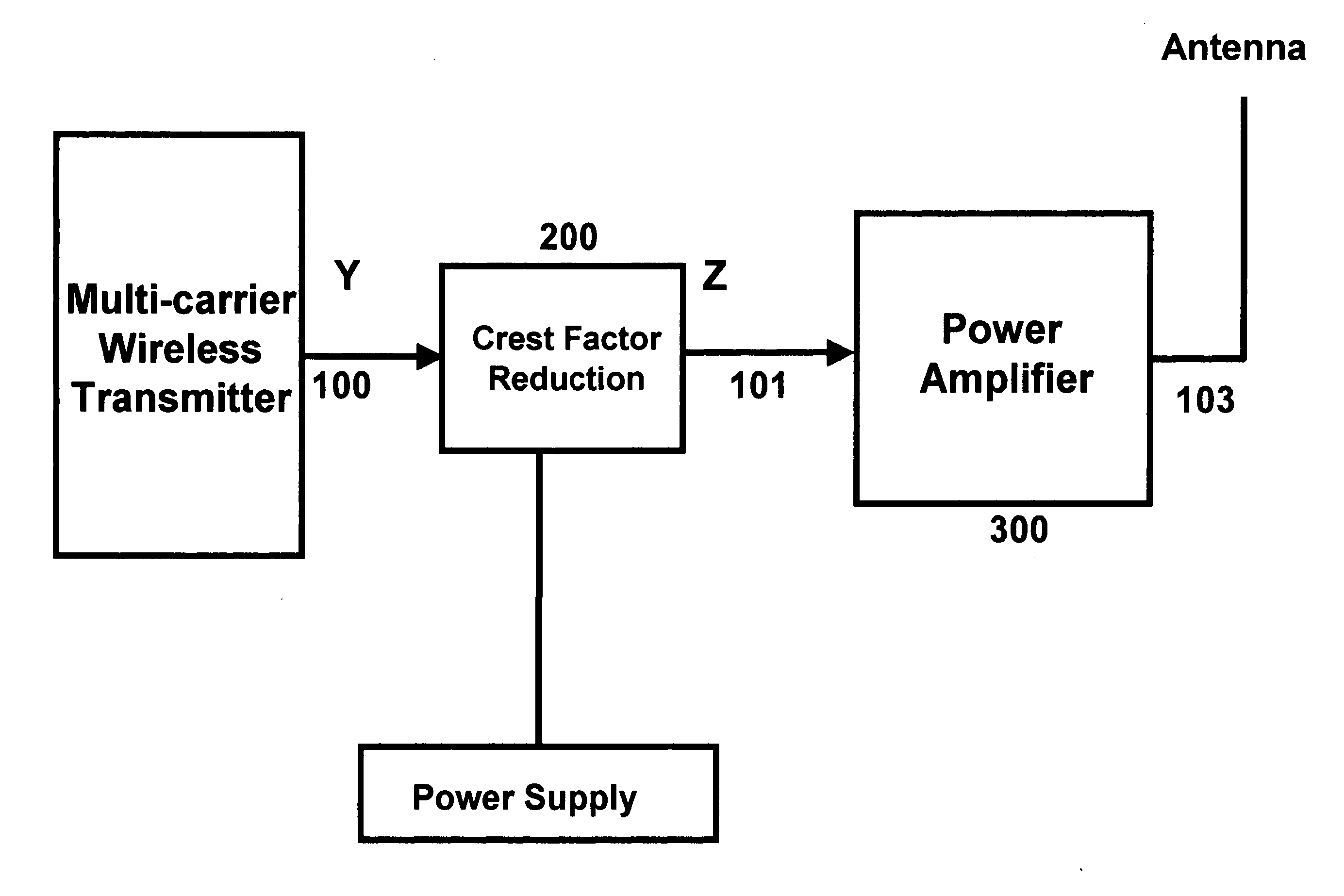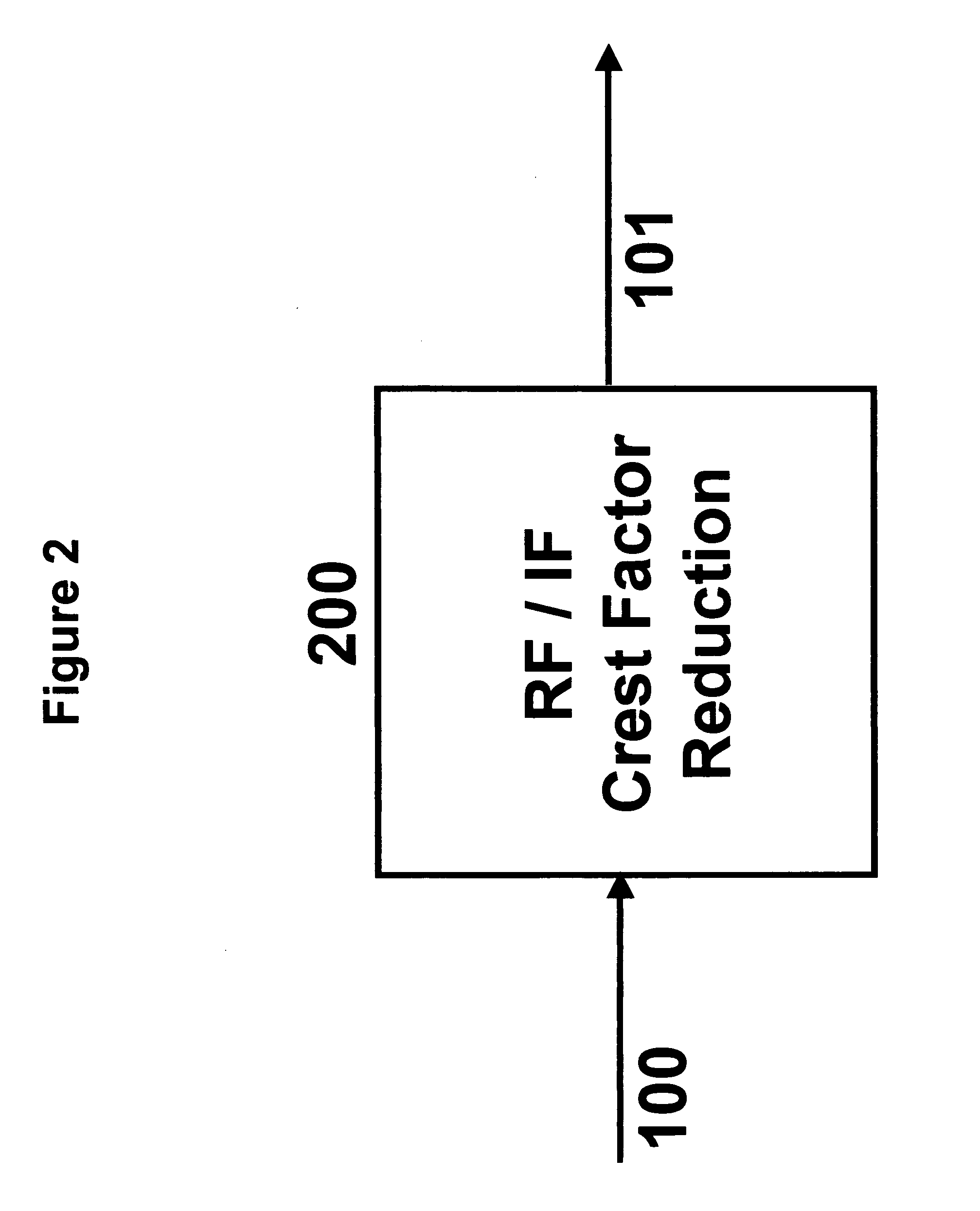Simple crest factor reduction technique for non-constant envelope signals
a crest factor and non-constant envelope technology, applied in the direction of transmission, electrical equipment, etc., can solve the problems of high power consumption, high power consumption, cost and size of the system, and achieve the effect of improving the power handling of the rf amplifier, boosting the power handling of the amplifier, and low-cost crest factor
- Summary
- Abstract
- Description
- Claims
- Application Information
AI Technical Summary
Benefits of technology
Problems solved by technology
Method used
Image
Examples
Embodiment Construction
[0015] In a first preferred embodiment the Crest Factor reduction circuit monitors the signal strength of the input signal channels using the input receiver and finds the frequency and channel number of the input signals. In a second preferred embodiment of the invention, the Crest Factor reduction circuit is implemented at RF / IF frequency. In a third preferred embodiment of the invention, the Crest Factor reduction circuit uses sub-harmonic sampling to convert RF or IF signals to digital baseband signal. In a fifth preferred embodiment the input signal is conditioned or Crest Factor reduced using the baseband signal. In a sixth embodiment the Crest Factor reduction is applied on baseband real signal. In a seventh embodiment the Crest Factor reduction is applied on both real and imaginary components of the baseband signal. In an eighth embodiment the signal is amplitude clipped or limited either in analog or digital domain. In a ninth embodiment the baseband clipping circuit uses th...
PUM
 Login to View More
Login to View More Abstract
Description
Claims
Application Information
 Login to View More
Login to View More - R&D
- Intellectual Property
- Life Sciences
- Materials
- Tech Scout
- Unparalleled Data Quality
- Higher Quality Content
- 60% Fewer Hallucinations
Browse by: Latest US Patents, China's latest patents, Technical Efficacy Thesaurus, Application Domain, Technology Topic, Popular Technical Reports.
© 2025 PatSnap. All rights reserved.Legal|Privacy policy|Modern Slavery Act Transparency Statement|Sitemap|About US| Contact US: help@patsnap.com



